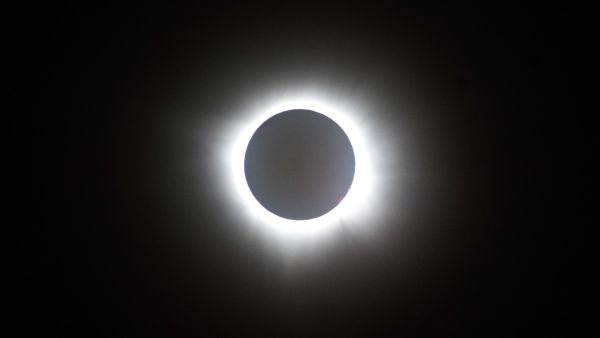ALBAWABA - North America witnessed the first total solar eclipse of 2024, capturing the attention of millions of viewers in Mexico, the US, and Canada.
2024's first solar eclipse from the United States of America
It began as a solar spectacle at 11:07 local time in Mazatlan, Mexico, and ended at 17:16 in Canada after traveling northeast across the US.
Thousands of people put on special eclipse glasses and looked through telescopes to see this amazing natural phenomena as it occurred in over 13 states, from coast to coast.
With a path that was 6,437 kilometers long and around 186 kilometers wide, the complete eclipse impacted the countries of Mexico, the United States, and Canada, home to some 44 million people.
Partial phases were seen outside of this corridor, but residents along the eclipse's route were treated to a front-row seat to the "total solar eclipse."
With the exception of Alaska and Hawaii, sightings of partial eclipses were reported in all 48 contiguous states of the United States.
"Solar Eclipse Tourism" is growing. Along the Path, eager to see the eclipse up close, a large number of enthusiasts descended upon overlooks along the eclipse's path.
Observable from the Pacific coast of Mexico, the eclipse's path proceeded northeast through Texas and Mexico, then toward New York, Maine, and finally into Canada.
Among the numerous urban areas that witnessed the eclipse were Dallas, Idabel, Littler Rock, Poplar Bluff, Paducah, Carbodale, Evansville, Cleveland, Erie, Buffalo, Burlington, Lancaster, and Caribou.
Some areas experienced higher traffic and crowds as communities prepared for the event, leading officials to declare emergencies and put in place security measures to control the flood of tourists.
Experts advised wearing certified solar eclipse glasses for safe viewing since they efficiently filter out ultraviolet and infrared radiation, preventing eye damage from exposure to direct sunlight.
The upcoming total solar eclipse in the US scheduled to occur in 2044
In areas along the eclipse's path across the center, the Moon blocked the Sun for an astounding 4 minutes and 28 seconds.
The progressive turning of the Sun into a crescent shape during the eclipse signaled the beginning of the partial eclipse, which culminated in the breathtaking sight of the "Diamond Ring" as the Moon moved in front of the Sun.
Looking ahead, October 2nd, 2024, is set aside for the next eclipse, which will appear in southern Chile and Argentina as a ring-shaped solar eclipse. The next total solar eclipse that the US will likely see is in 2044.
Looking back, the last solar eclipse of 2021—dubbed the "Ring of Fire" by astronomers—grazed the Northern Hemisphere on June 10. It covered a region roughly 500 kilometers wide, from Canada to Siberia, with 60% of it visible in New York City, USA.










